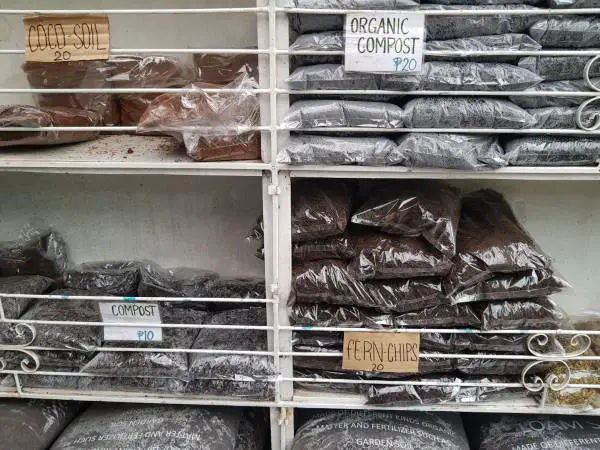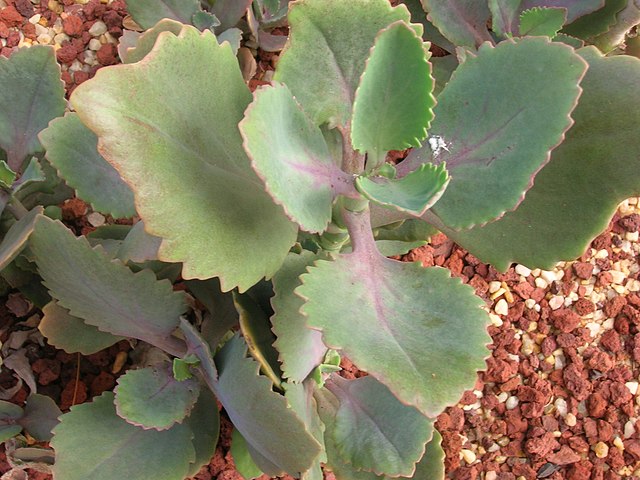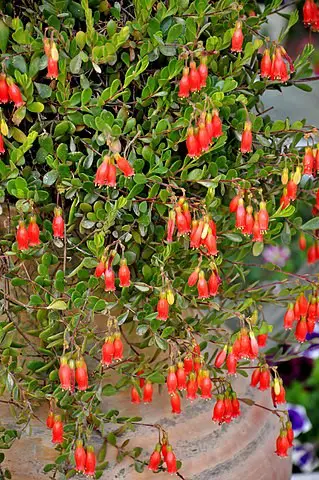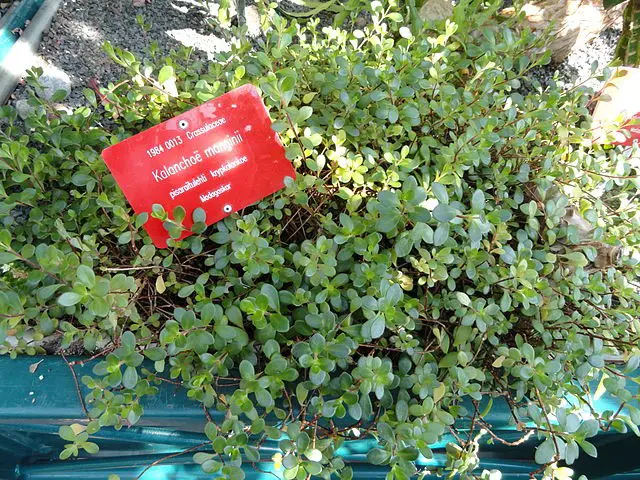I know that soil is the foundation of any healthy plant, and it is particularly important for succulents such as kalanchoe. Choosing the right soil can make all the difference in the growth and health of your kalanchoe plant. In this article, I will discuss the best soil for kalanchoe succulents and answer some commonly asked questions about soil, repotting, watering, and fertilizing.
Why is Good Soil Important for Kalanchoe Succulents?
Kalanchoe is a type of succulent that requires well-draining soil to prevent root rot and promote healthy growth. Good soil is important because it provides the necessary nutrients for the plant to thrive and helps maintain proper moisture levels. The right soil can also prevent pests and diseases from taking hold in your plant.
Commonly Used Brands of Soil for Kalanchoe
There are many brands of soil available for kalanchoe, and some of the most commonly used include:
- Miracle-Gro Cactus, Palm & Citrus Potting Mix – This soil mix contains a blend of peat moss, sand, and perlite, and is designed specifically for cactus, palm, and citrus plants. It is formulated to provide excellent drainage and aeration, and it also contains slow-release fertilizer to feed the plants for up to 6 months.
- Hoffman Organic Cactus and Succulent Soil Mix – This soil mix is made from a blend of Canadian sphagnum peat moss, perlite, sand, and limestone. It is designed to provide excellent drainage and aeration while also retaining moisture and nutrients. It is organic and free of artificial additives, and it is suitable for a wide variety of cactus and succulent species.
- Espoma Organic Cactus Mix – This soil mix is made from a blend of peat moss, sand, perlite, and earthworm castings. It is formulated to provide excellent drainage and aeration, and it also contains Myco-tone, a proprietary blend of beneficial microbes that help improve soil structure and promote healthy root growth. It is organic and free of synthetic fertilizers and pesticides.
- Bonsai Jack Succulent and Cactus Soil Gritty Mix – This soil mix is made from a blend of 33% pine bark fines, 33% 1/4-inch Bonsai Block calcined clay, and 33% Monto Clay. It is designed to provide excellent drainage and aeration, and it is pH-balanced to promote healthy plant growth. It is also free of harmful chemicals and pathogens.
- Black Gold Cactus Mix – This soil mix is made from a blend of Canadian sphagnum peat moss, perlite, sand, and limestone. It is designed to provide excellent drainage and aeration while also retaining moisture and nutrients. It is also enriched with earthworm castings, perlite, and pumice to promote healthy root growth and improve soil structure.
Each of these soil mixes has its own unique blend of ingredients and properties, but all are designed to provide excellent drainage and aeration while also retaining moisture and nutrients. Some brands may be more suitable for certain species of cacti and succulents, depending on their specific needs and growing conditions. It’s important to choose a soil mix that is appropriate for the specific species of Kalanchoe succulent you are growing, as well as the environmental conditions in which they are being grown..
What is the Best Soil Mix for Kalanchoe Succulents?
The best soil mix for succulents is a well-draining mix that contains a combination of sand, perlite, and peat moss. The ideal soil mix should allow water to flow through quickly, but it should also retain enough moisture to support plant growth.
- Sand: Sand is a crucial ingredient in a soil mix for Kalanchoe succulents because it helps to improve drainage. Sand is made up of large particles that create large pore spaces in the soil. These pore spaces allow excess water to drain away from the roots of the plant quickly, preventing the soil from becoming waterlogged. Sand also provides some weight to the soil mix, which helps to stabilize the plant and prevent it from toppling over.
- Perlite: Perlite is another ingredient that’s commonly used in soil mixes for Kalanchoe succulents because it helps to improve drainage and aeration. Perlite is made up of small, lightweight particles that create small pore spaces in the soil. These small pore spaces allow for good air circulation within the soil, which is important for healthy root growth. Perlite also helps to prevent the soil from becoming compacted over time, which can impede water drainage and root growth.
- Peat Moss: Peat moss is a type of organic matter that’s commonly used in soil mixes for Kalanchoe succulents because it helps to retain moisture. Peat moss is highly absorbent and can hold up to 20 times its weight in water, which makes it ideal for plants that need to be watered sparingly. Peat moss also helps to improve the structure of the soil by creating small pore spaces that allow for good air circulation.
Together, these ingredients create a soil mix that is well-draining, aerated, and able to retain some moisture, which are all important factors for the health of Kalanchoe succulents. It’s important to note that the specific ratio of sand, perlite, and peat moss that you use may vary depending on factors such as the climate in which you live and the type of Kalanchoe succulent that you’re growing.
Different species of Kalanchoe plants may require slightly different soil mixes to thrive. Here are some examples:
- Kalanchoe tomentosa: This species of Kalanchoe, also known as the “panda plant,” prefers a well-draining soil mix that is high in perlite and sand. A mix of potting soil, perlite, and coarse sand in equal parts can work well.
- Kalanchoe blossfeldiana: The flowering Kalanchoe plant prefers a well-draining soil mix with good moisture retention. A mix of peat moss, perlite, and vermiculite in equal parts can work well.
- Kalanchoe luciae: This species, also known as “paddle plant,” prefers a well-draining soil mix that is low in organic matter. A mix of potting soil, perlite, and coarse sand in equal parts can work well.
- Kalanchoe daigremontiana: This species, also known as “mother of thousands,” prefers a soil mix that is well-draining and has good moisture retention. A mix of potting soil, perlite, and coconut coir in equal parts can work well.
Frequently Asked Questions About Kalanchoe Soil and Reporting
Can You Use Succulent Soil for Kalanchoe?
Yes, you can use succulent soil for kalanchoe as it has similar properties to cactus soil. Succulent soil is well-draining and contains a mix of ingredients such as sand, perlite, and peat moss that allow water to flow through easily, preventing root rot.
Can I Use Cactus Soil for Kalanchoe?
Yes, you can use cactus soil for kalanchoe as it is designed to provide excellent drainage and prevent root rot. However, make sure that the soil is not too heavy, and it has a good balance of organic matter and mineral components.
Do Kalanchoe Succulents Like Tight or Big Pots?
Kalanchoe succulents do not necessarily prefer tight pots. In fact, they prefer a pot that is just slightly larger than their root ball. This is because succulents, including Kalanchoe, like their soil to dry out quickly after watering. If the pot is too large, the soil will take longer to dry out, which can cause the roots to sit in wet soil for too long and potentially rot.
Why is My Kalanchoe Succulent Dying After Repotting?
If your Kalanchoe succulent is dying after repotting, it could be due to several reasons. One possible reason is that the soil you used is too heavy and does not drain well, causing the roots to sit in water and rot. Another reason could be that the pot you used is too large, causing the soil to stay wet for too long. Additionally, if you damaged the roots during repotting, the plant may struggle to absorb water and nutrients, leading to wilting and eventual death.
Should You Break Up Roots When Repotting Kalanchoe Succulents?
It is generally not recommended to break up the roots when repotting Kalanchoe succulents, as their roots are delicate and can be easily damaged. Instead, gently loosen the soil around the root ball and carefully remove the plant from its old pot. If the roots are tightly bound and circling around the root ball, you can carefully cut some of the outer roots to encourage new growth.
Conclusion
Kalanchoe succulents are popular houseplants known for their colorful blooms and ease of care. To keep your Kalanchoe succulent healthy and thriving, it is important to use the right soil. A well-draining, porous soil mix that contains sand, perlite, and peat moss is recommended. Avoid using heavy soils or soils that retain too much moisture, as this can cause root rot and other problems. Additionally, be sure to water your Kalanchoe sparingly, from the bottom, and avoid misting the leaves. With the right soil and care, your Kalanchoe succulent will bloom beautifully for years to come.




